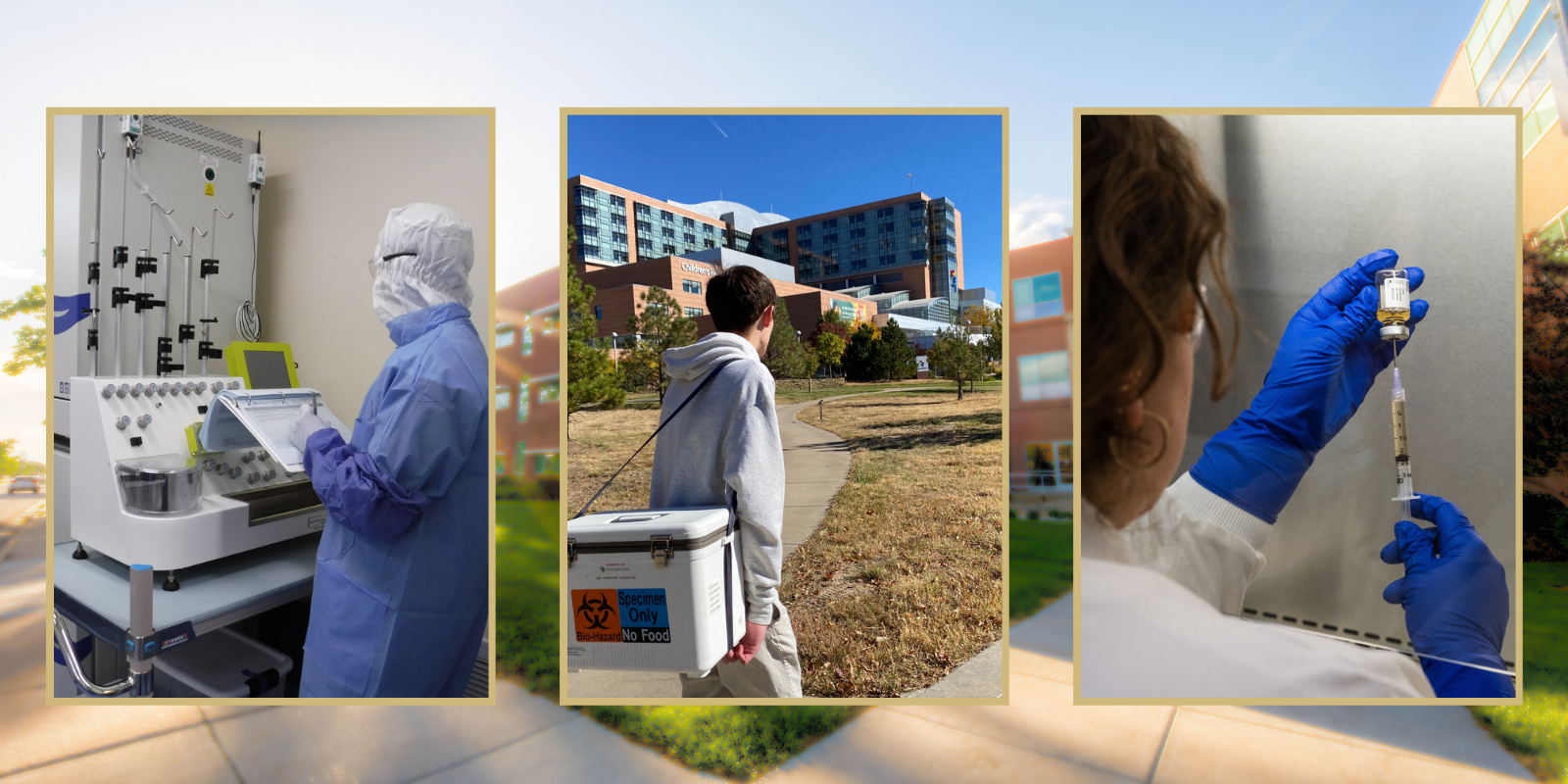The Gates Biomanufacturing Facility (GBF) is gearing up for what has become a summertime tradition. It has nothing to do with activities associated with summer; the purpose is to keep the operation running smoothly year-round.
“The annual shutdown allows us to facilitate major maintenance activities that would be too disruptive to complete during normal operations,” says Chandresh Undhad, director of quality for the GBF, a pillar of Gates Institute.
As a Good Manufacturing Practice (GMP) facility, the GBF follows strict FDA standards that regulate drug manufacturing. Staff must wear protective gowns to enter a designated “cleanroom,” which is an isolated, strictly controlled environment with respect to temperature, humidity, air pressure, air flow and more. Proper cleanroom gowning helps control airborne particles such as dust and microbes that can be carried in by operators. The gowning requirements in Biologics and Cell Therapy are similar, but gowning varies slightly according to room use and regulatory requirements.
But when GMP production ceases, gowns are not required in these rooms, enabling staff and contractors to more easily perform maintenance tasks, says Michael Caffrey, assistant director of facilities who will serve as project manager for the shutdown.
During the shutdown, annual HVAC maintenance is performed, along with sundry other maintenance tasks, large and small, from construction and painting to equipment calibration, troubleshooting, replacement and repairs.
GBF staff begin planning the shutdown about six months in advance to procure resources and coordinate with vendors and staff. The staff takes into account which clinical trials are open for which the GBF provides biomanufacturing services, and schedules the shutdown around these needs. The shutdown is limited to GMP cleanrooms and certain utilities; biologics process development services are not affected.
Caffrey says planning begins by determining the first day they can shut down GMP suites to start work, then determining the first day they can be ready to return to full manufacturing. “With these two bookends, we can work projects into the schedule to ensure we are being as efficient and productive as possible,” he says.
Once the maintenance tasks are complete, a cleaning of GMP areas is required using sporicidal fogging, says Felicia Lanzarone, senior manager of cell therapy manufacturing.
“This cleaning technique involves atomizing an EPA-registered disinfectant solution into tiny droplets to disinfect all surfaces and is effective against viruses, bacteria, and bacterial spores,” says Lanzarone. “To verify effectiveness of the fogging, environmental monitoring to test for the presence of bacteria and mold is completed prior to releasing the rooms for clinical use.”
The staff also use the time to schedule other tasks such as inventory tracking software upgrades. This year, staff who are manager level and above are attending leadership training over four days.
Caffrey, who joined the GBF in late 2023, brings a wealth of project management experience as a civilian serviceman. During his time supporting the military, he managed similar operations for the Navy, taking ships out of commission to perform maintenance – often lasting four to six weeks. The GBF shutdown will last two and a half weeks.
“This is the only time in the calendar year we can go into spaces without gowning requirements and get the labs into tip-top shape,” says Caffrey. “We will get everything to the highest standards.”
Editor's note: In photo at top, Gates Biomanufacturing staff members perform work during the annual shutdown of the facility. Photo courtesy of Andrew Slade.



-2.png)